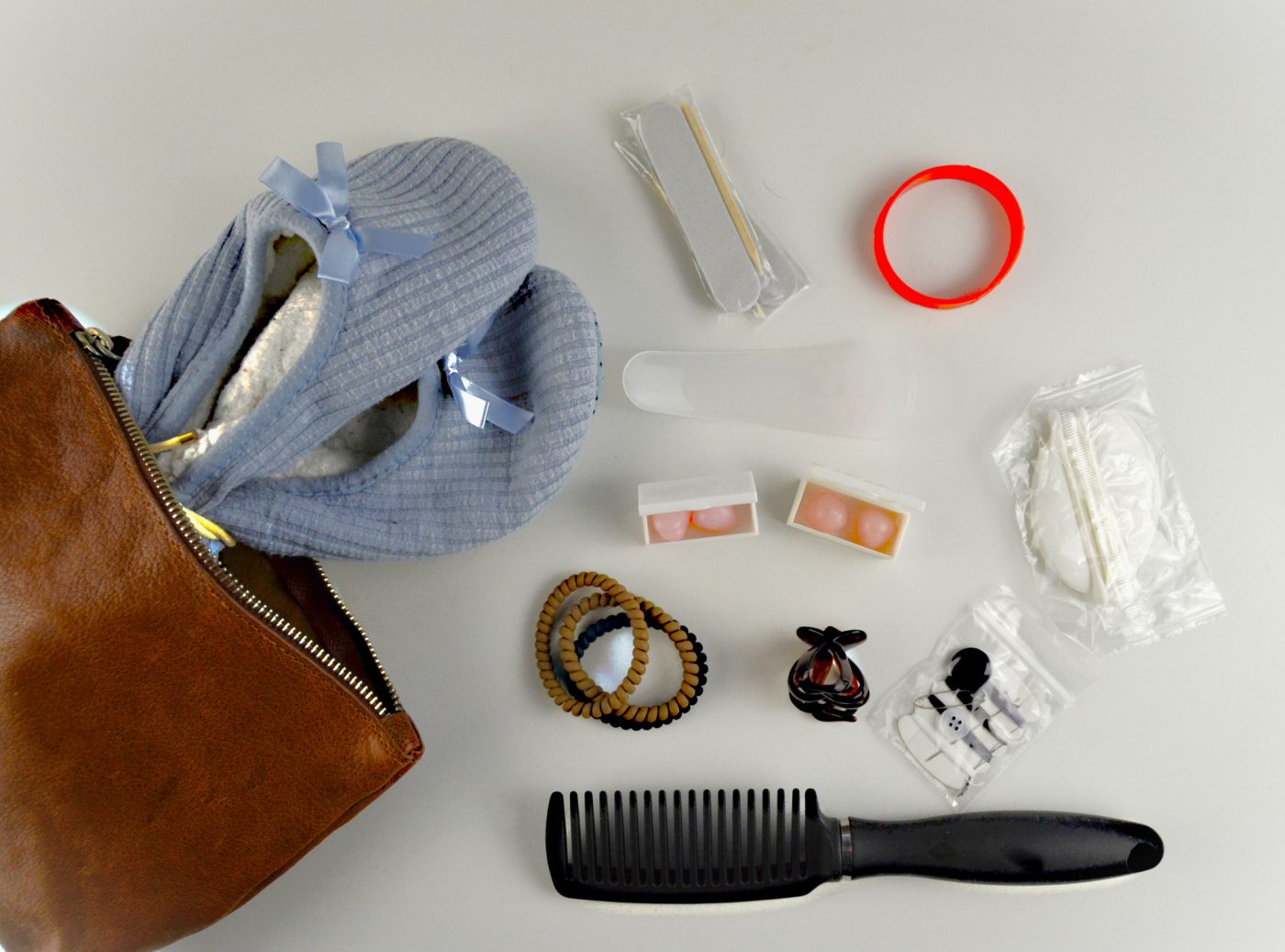Thought of the Day

Use a kind word to inspire confidence and encourage kids to develop good values.


Use a kind word to inspire confidence and encourage kids to develop good values.

By AARON BEARD AP Basketball Writer
RALEIGH, N.C. (AP) — N.C. State fired men’s basketball coach Kevin Keatts on Sunday, an abrupt end to an eight-year tenure coming less than a year after the Wolfpack’s improbable run to the Atlantic Coast Conference championship and the Final Four.
The school announced the move a day after the Wolfpack closed a 12-19 season.
“I want to thank Coach Keatts for his contributions to N.C. State and for always representing the university with class,” athletic director Boo Corrigan said in a statement. “He will always have a treasured place in Wolfpack history for the accomplishments of his 2023-24 squad and I appreciate the passion he brought to this role. We wish him and his family the best in the future.”
Keatts posted his own statement on social media, calling the past eight years “a dream come true.”
“As we enter this new era of college sports, I wholeheartedly believe that I am leaving the program in better position to succeed than when I started — and that the basketball program will continue to thrive when supported to the level necessary to compete,” Keatts said.
He signed off with a nod to players being able to transfer freely in a rapidly evolving college sports landscape.
“I am officially entering the portal,” Keatts said.
Keatts went 151-113 at N.C. State, including 69-84 in ACC play. His teams earned three NCAA Tournament bids, the last coming when the Wolfpack followed a five-games-in-five-days ride to their first ACC Tournament title since 1987 with a just-as-unexpected run to the program’s first Final Four since the late Jim Valvano led the “Cardiac Pack” to the 1983 NCAA title.
It was difficult to predict that Keatts would be out of a job a year later.
But he couldn’t sustain that momentum as this season turned into a crashout, with the Wolfpack’s retooling through the transfer portal — which had worked well enough to get N.C. State to back-to-back NCAA bids — proving to be a major miss. N.C. State went just 5-15 in league play, suffering the ignominy as the reigning champion to miss the 15-team ACC Tournament in an expanded 18-team league.
That included going 0-11 on the road, an ugly mark considering Keatts had made it a tradition for the team to get ice cream after road wins. The finale came with the Wolfpack giving up the last 10 points in Saturday’s loss to a Miami team that had won just six games all year.
The firing comes after Keatts faced multiple challenges in his tenure, starting with stabilizing a wobbly program on the court and then working for years amid the shadow of a federal corruption investigation into the sport that was tied to predecessor Mark Gottfried’s tenure. That case hovered for years before the program was placed on a year of probation in December 2021.
Ultimately, Keatts had five 20-win seasons but never delivered a consistent winner that Wolfpack fans have desperately craved, with the wild swing from the past 12 months illustrating that problem.
He arrived in 2017 from UNC Wilmington promising that “Kevin Keatts is a winner” in his introductory news conference. In many ways, he matched that, particularly after the program had bottomed out in Gottfried’s final two seasons after four straight NCAA bids. Keatts started with a 21-win season that included taking down highly ranked Duke, UNC and Arizona teams before reaching the NCAAs.
That was the first of the 20-win seasons, though one ended with the Wolfpack falling on the wrong side of the bubble on Selection Sunday (2019) and had another likely bid vanish when the COVID-19 pandemic canceled the 2020 tournament. Then came two years of struggles, notably with a program-record 21 losses in 2022 before the final two-year upturn that culminated with last year’s remarkable run.


Learning how to be still, to really be still and let life happen – that stillness becomes radiance.


Japanese Fruit Sandwiches Recipe from Cozy Meal
Prep time: 30 minutes – 2 hours
Cooking time: N/A
Serving size: 4 sandwiches
For the Stabilized Whipped Cream

Note: Wipe the knife clean and slice off the crusts, wiping the knife clean after each cut.
(For the mixed fruit Japanese fruit sandwich, line up a strawberry, a 3-segment orange, kiwi, a 3-segment orange, and a strawberry along the diagonal line. Fill the remaining spaces with leftover fruit.)

By LISA MASCARO AP Congressional Correspondent
WASHINGTON (AP) — Almost two months into President Donald Trump’s second term, the chairman of the House Republican campaign committee is already predicting his party will pick up seats in the midterm elections some 20 months away.
Rep. Richard Hudson, R-N.C., is in charge of increasing the GOP’s slim majority in the House, or at least defending it. After Republicans met privately this past week with Elon Musk, Hudson said the cuts pushed by the Department of Government Efficiency are resonating with voters.
With disruptions at GOP town halls during the recent break, Hudson and House Speaker Mike Johnson, R-La., have told Republican lawmakers to skip the events for now and meet with constituents elsewhere. Nevertheless, Hudson said Republicans are confident their budget-cutting is “on the side of the angels.”
Here’s the political outlook from the chairman of the National Republican Congressional Committee as he confronts Democrats trying to win back the House in 2026. This Q&A has been edited for brevity and length.
HUDSON: “I just said that, it’s very important that all of us are communicating with our constituents, are very visible in our districts, very accessible. And it’s a shame that Democrat organizations are paying people to disrupt in-person town halls. And so this normal dialogue that we want to have with our constituents isn’t possible at in-person town halls. So we need to use technology to reach our constituents.”
HUDSON: “I think it’s the greatest thing that’s happened since I’ve been in Congress.”
“My biggest frustration as a member of Congress is these massive bureaucracies that hide all their spending and when I ask questions or send letters, ignore it. And now it’s all mapped. You can see it all. There’s transparency for the American people. Now we can go in and decide, do we like the taxpayers’ dollars being spent on this program? Yes. Let’s keep it. This one? No, let’s cut it. I mean, we actually can do our job.”
“It’s exciting. It’s exhilarating.”
HUDSON: “(Musk) did say that the the the firings at the VA (Department of Veterans Affairs) were a mistake done by that agency, by the VA.”
“He said mistakes were made by bureaucrats.”
HUDSON: “I’m disturbed when I hear veterans are being fired. I think we ought to give veterans priority. But, you know, I do acknowledge that there may need to be firings in all these agencies.”
“When it comes to the VA, for example, what I’m concerned about is giving world class health care to our veterans in a timely manner. And so any waste, fraud and abuse that makes that difficult or messes that up, I’m interested in cutting.”
HUDSON: “Hang tight.”
HUDSON: “I mean there may be some mistakes that are being corrected.”
HUDSON: “The American people are sick of the swamp. They’re sick of waste, fraud and abuse. For the first time. ever, we finally have the tools to affect it. So I think the voters are going to reward us.”
HUDSON: “I think they’re digging their own grave politically.”
“We’re on the side of the angels. We’re doing what the American people asked us to do, what 77 million people voted for Donald Trump to get.”
“We’re going to pick up seats.”

CHAPEL HILL, N.C. (AP) — Freshman Kon Knueppel scored 17 points to help No. 2 Duke beat rival North Carolina 82-69 on Saturday night and clinch the outright Atlantic Coast Conference regular-season title.
Cooper Flagg added 15 points, nine rebounds and six assists despite first-half foul trouble for the Blue Devils (28-3, 19-1).
Duke blew a 15-point first-half lead and trailed by seven midway early after the break, but responded with 12 consecutive points to turn the game and silence a roaring hostile crowd.
The Blue Devils are now in position to rise to No. 1 in Monday’s AP Top 25 poll with top-ranked Auburn losing its past two games.
Fifth-year senior RJ Davis scored 20 points in his final home game for Tar Heels (20-12), who were blown out in the first meeting but responded with far more resilience this time before Duke asserted control to stretch out the lead in the final seven minutes.
Duke: The Final Four favorite completed the first 19-1 regular-season slate since the ACC moved to 20 games in 2019-20.
UNC: The Tar Heels had won six straight coming in with their best play of the season to play their way back into better positioning for an NCAA bid. But this was their last certain chance to add a resume-topping win to help that case.
UNC led 59-53 when Duke made its move with 12 straight points in a 15-2 burst that put the Blue Devils ahead to stay. That included Knueppel’s backdoor layup for the lead, while versatile defender Maliq Brown had a big 3-pointer in his return from injury that pushed Duke to a 68-61 lead with 8 1/2 minutes left.
UNC missed 22 of its last 27 shots in the final 15-plus minutes as Duke made its move.
The ACC Tournament starts Tuesday in Charlotte. Duke opens play as the 1-seed in Thursday’s quarterfinals. UNC is the 5-seed and will play in Wednesday’s second round.


Hana yori dango means practical things over pretty things.


Edna Mae’s Sour Cream Pancake Recipe from The Pioneer Woman
Prep time: 10 minutes
Cooking time: 20 minutes
Serving size: 2 servings



By JEFFREY COLLINS Associated Press
COLUMBIA, S.C. (AP) — A South Carolina man who killed his ex-girlfriend’s parents with a baseball bat was executed by firing squad Friday, the first U.S. prisoner in 15 years to die by that method, which he saw as preferable to the electric chair or lethal injection.
Three volunteer prison employees used rifles to carry out the execution of Brad Sigmon, 67, who was pronounced dead at 6:08 p.m.
Sigmon killed David and Gladys Larke in their Greenville County home in 2001 in a botched plot to kidnap their daughter. He told police he planned to take her for a romantic weekend, then kill her and himself.
Sigmon’s lawyers said he chose the firing squad because the electric chair would “cook him alive,” and he feared that a lethal injection of pentobarbital into his veins would send a rush of fluid and blood into his lungs and drown him.
The details of South Carolina’s lethal injection method are kept secret in South Carolina, and Sigmon unsuccessfully asked the state Supreme Court on Thursday to pause his execution because of that.
On Friday, Sigmon wore a black jumpsuit with a hood over his head and a white target with a red bullseye over his chest.
The armed prison employees stood 15 feet (4.6 meters) from where he sat in the state’s death chamber — the same distance as the backboard is from the free-throw line on a basketball court. Visible in the same small room was the state’s unused electric chair. The gurney used to carry out lethal injections had been rolled away.
The volunteers all fired at the same time through openings in a wall. They were not visible to about a dozen witnesses in a room separated from the chamber by bullet-resistant glass. Sigmon made several heavy breaths during the two minutes that elapsed from when the hood was placed to the shots being fired.
The shots, which sounded like they were fired at the same time, made a loud, jarring bang that caused witnesses to flinch. His arms briefly tensed when he was shot, and the target was blasted off his chest. He appeared to give another breath or two with a red stain on his chest, and small amounts of tissue could be seen from the wound during those breaths.
A doctor came out about a minute later and examined Sigmon for 90 seconds before declaring him dead.
Witnesses included three family members of the Larkes. Also present were Sigmon’s attorney and spiritual advisor, a representative from the prosecuting solicitor’s office, a sheriff’s investigator and three members of the news media.
Sigmon’s lawyer read a closing statement that he said was “one of love and a calling to my fellow Christians to help us end the death penalty.”
Prison spokeswoman Chrysti Shain said Sigmon’s last meal was four pieces of fried chicken, green beans, mashed potatoes with gravy, biscuits, cheesecake and sweet tea.
The firing squad is an execution method with a long and violent history in the U.S. and around the world. Death in a hail of bullets has been used to punish mutinies and desertion in armies, as frontier justice in America’s Old West and as a tool of terror and political repression in the former Soviet Union and Nazi Germany.
Since 1977 only three other prisoners in the U.S. have been executed by firing squad. All were in Utah, most recently Ronnie Lee Gardner in 2010. Another Utah man, Ralph Menzies, could be next; he is awaiting the result of a hearing in which his lawyers argued that his dementia makes him unfit for execution.
In South Carolina on Friday, a group of protesters holding signs with messages such as “All life is precious” and “Execute justice not people” gathered outside the prison before Sigmon’s execution.
Supporters and lawyers for Sigmon asked Republican Gov. Henry McMaster to commute his sentence to life in prison. They said he was a model prisoner trusted by guards and worked every day to atone for the killings and also that he committed the killings after succumbing to severe mental illness.
But McMaster denied the clemency plea. No governor has ever commuted a death sentence in the state, where 46 other prisoners have been executed since the death penalty resumed in the U.S. in 1976. Seven have died in the electric chair and 39 others by lethal injection.
Gerald “Bo” King, chief of the capital habeas unit in the federal public defender’s office, said Sigmon “used his final statement to call on his fellow people of faith to end the death penalty and spare the lives of the 28 men still locked up on South Carolina’s death row.”
“It is unfathomable that, in 2025, South Carolina would execute one of its citizens in this bloody spectacle,” King said in a statement. “But South Carolina has ended the life of a man who has devoted himself to his faith, and to ministry and service to all around him. Brad admitted his guilt at trial and shared his deep grief for his crimes with his jury and, in the years since, with everyone who knew him.”
In the early 2000s, South Carolina was among the busiest death penalty states, carrying out an average of three executions a year. But officials suspended executions for 13 years, in part because they were unable to obtain lethal injection drugs.
The state Supreme Court cleared the way to resume them in July. Freddie Owens was the first to be put to death, on Sept. 20, after McMaster denied him clemency. Richard Moore was executed on Nov. 1 and Marion Bowman Jr. on Jan. 31.
Going forward the court will allow an execution every five weeks.
South Carolina now has 28 inmates on its death row including two who have exhausted their appeals and are awaiting execution, most likely this spring. Just one man has been added to death row in the past decade.
Before executions were paused, more than 60 people faced death sentences. Many of those have either had their sentences reduced to life or died in prison.
___
Associated Press writer Adrian Sainz in Memphis, Tennessee, contributed.

By JAMIE STENGLE Associated Press
DALLAS (AP) — Once again, most Americans will set their clocks forward by one hour this weekend, losing perhaps a bit of sleep but gaining more glorious sunlight in the evenings as the days warm into summer.
Where did this all come from, though?
How we came to move the clock forward in the spring, and then push it back in the fall, is a tale that spans over more than a century — one that’s driven by two world wars, mass confusion at times and a human desire to bask in the sun for a long as possible.
There’s been plenty of debate over the practice, but about 70 countries — about 40% of those across the globe — currently use what Americans call daylight saving time.
While springing the clocks forward “kind of jolts our system,” the extra daylight gets people outdoors, exercising and having fun, says Anne Buckle, web editor at timeanddate.com, which features information on time, time zones and astronomy.
“The really, really awesome advantage is the bright evenings, right?” she says. “It is actually having hours of daylight after you come home from work to spend time with your family or activities. And that is wonderful.”
Here are some things to know so you’ll be conversant about the practice of humans changing time:
In the 1890s, George Vernon Hudson, an astronomer and entomologist in New Zealand, proposed a time shift in the spring and fall to increase the daylight. And in the early 1900s, British homebuilder William Willett, troubled that people weren’t up enjoying the morning sunlight, made a similar push. But neither proposal gained enough traction to be implemented.
Germany began using daylight saving time during World War I with the thought that it would save energy. Other countries, including the United States, soon followed suit. During World War II, the U.S. once again instituted what was dubbed “war time” nationwide, this time year-round.
In the United States today, every state except Hawaii and Arizona observes daylight saving time. Around the world, Europe, much of Canada and part of Australia also implement it, while Russia and Asia don’t currently.
After World War II, a patchwork of timekeeping emerged across the United States, with some areas keeping daylight saving time and others ditching it.
“You might have one town has daylight saving time, the neighboring town might have daylight saving time but start it and end it on different dates and the third neighboring town might not have it at all,” says David Prerau, author of the book “Seize the Daylight: The Curious and Contentious Story of Daylight Saving Time.”
At one point, if riders on a 35-mile (56-kilometer) bus ride from Steubenville, Ohio, to Moundsville, West Virginia, wanted their watches to be accurate, they’d need to change them seven times as they dipped in and out of daylight saving time, Prerau says.
So in 1966, the U.S. Congress passed the Uniform Time Act, which say states can either implement daylight saving time or not, but it has to be statewide. The act also mandates the day that daylight saving time starts and ends across the country.
Confusion over the time change isn’t just something from the past. In the nation of Lebanon last spring, chaos ensued when the government announced a last-minute decision to delay the start of daylight saving time by a month — until the end of the Muslim holy month of Ramadan. Some institutions made the change and others refused as citizens tried to piece together their schedules. Within days, the decision was reversed.
“It really turned into a huge mess where nobody knew what time it was,” Buckle says.
Changing the clocks twice a year leads to a lot of grumbling, and pushes to either use standard time all year, or stick to daylight saving time all year often crop up.
During the 1970s energy crisis, the U.S. started doing daylight saving time all year long, and Americans didn’t like it. With the sun not rising in the winter in some areas till around 9 a.m. or even later, people were waking up in the dark, going to work in the dark and sending their children to school in the dark, Prerau says.
”It became very unpopular very quickly,” Prerau says.
And, he notes, using standard time all year would mean losing that extra hour of daylight for eight months in the evenings in the United States.
In 1908, the Canadian city of Thunder Bay — then the two cities of Fort William and Port Arthur — changed from the central time zone to the eastern time zone for the summer and fall after a citizen named John Hewitson argued that would afford an extra hour of daylight to enjoy the outdoors, says Michael deJong, curator/archivist at the Thunder Bay Museum.
The next year, though, Port Arthur stayed on eastern time, while Fort William changed back to central time in the fall, which, predictably, “led to all sorts of confusion,” deJong says.
Today, the city of Thunder Bay is on eastern time, and observes daylight saving time, giving the area, “just delightfully warm, long days to enjoy” in the summer, says Paul Pepe, tourism manager for Thunder Bay Community Economic Development Commission.
The city, located on Lake Superior, is far enough north that the sun sets at around 10 p.m. in the summer, Pepe says, and that helps make up for their cold dark winters. Residents, he says, tend to go on vacations in the winter and stay home in the summer: “I think for a lot of folks here, the long days, the warm summer temperatures, it’s a vacation in your backyard.”